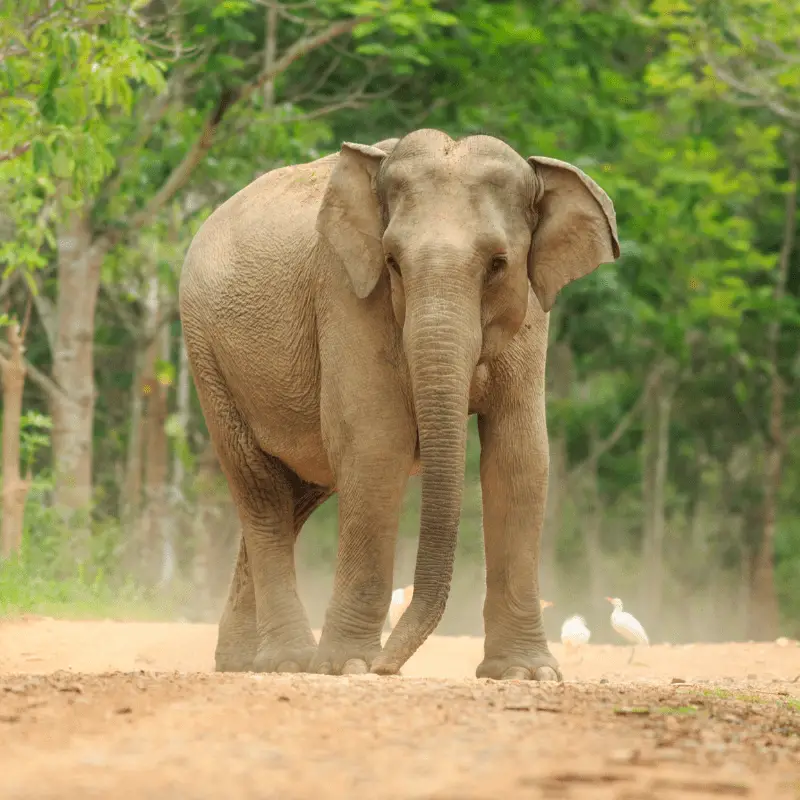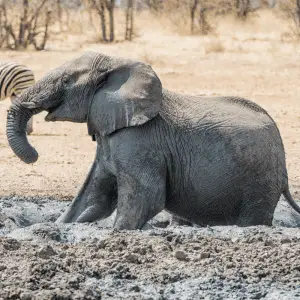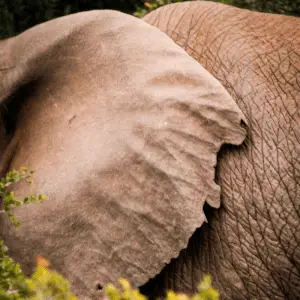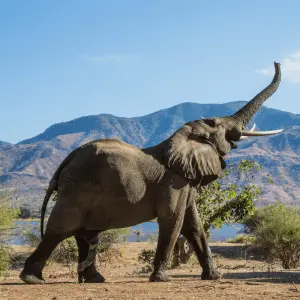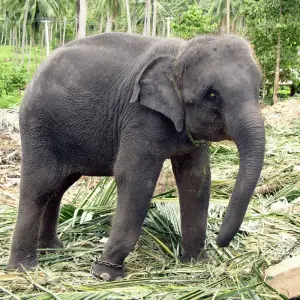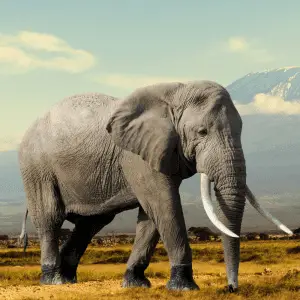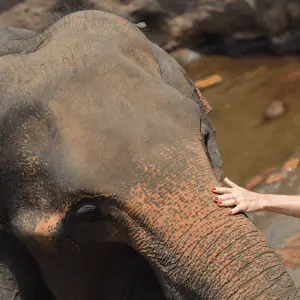Elephants are one of the most intriguing animals on the planet. These gentle giants have a few secrets you may not know about!
Largest Existing Land Animals
Elephants are one of the largest existing land animals. Even though there is a difference in the sizes of different elephant species, there is no doubt that elephants are giant mammals roaming on the Earth.
The African Bush elephant is, in fact, the largest land animal in the world. The average height of the male African Bush elephant is about 3.2 meters at its shoulders.
The average weight of the African elephant is about six metric tons. Compared to that, the female African elephant stands at about 2.6 meters in height. The body mass of female African elephants is about three metric tons. Compared to African elephants, Asian elephants are smaller in both size and weight.
A giant elephant that was ever measured was named Henry. In 1955 a Hungarian game hunter killed Henry in Angola. Later, he donated the body to the Smithsonian National Museum of Natural History. The height of Henry is 3.96 meters, the biggest of any African elephant roaming on the Earth today.
Weight Henry was 11 tons when he was alive. An old-fashioned bullet retrieved from Henry’s back legs proved that the animal was about a hundred years old when the Hungarian hunter killed it in 1955.
It was a shame that this poor elephant went out this way at the end of his life.
Three Different Species
Currently, three different species of elephants are roaming the Earth.
They are the African Bush Elephant, the African Forest Elephant, and the Asian elephant.
Previously, researchers thought the African Forest elephants were a subspecies of the African Bush elephant. However, the recent DNA and morphological analysis results have proved that African Forest elephants are a separate species.
Baby Elephants Are the Biggest Babies Born on Land
As you can easily assume, elephant babies are the biggest babies born on the land. Among the babies of the elephant species, the African Bush elephant births the biggest baby. At the time of their birth, the height of the African Bush elephant babies was around 90 cm. The captive-born African Bush elephant baby’s weight is between hundred and 120 kg at birth. After they are born, the African Bush elephant babies gain about 500 grams of weight every day.
Elephant Tusks Continue to Grow Throughout Their Life
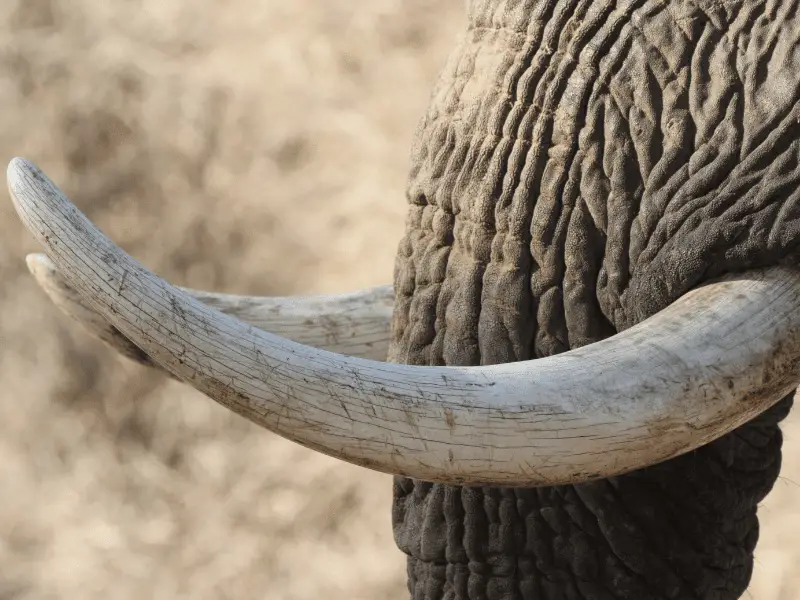
An elephant’s tusks are a sign of the maturity of the mammal. Even though not all Asian elephants develop tusks, both female and male African elephants develop them. If you spot a tuskless adult elephant in captivity, the chances are it is of Asian origin.
Researchers have seen a recent evolutionary trend in African elephants. They think some African elephants have strengthened their tuskless genes due to the rampant killing of tusked elephants.
Recommended Read: Do all elephants have tusks?
The tusks of the elephants are nothing but their overgrown incisors. The incisors of the upper jaw of the elephants keep on growing to form tusks.
The elephants use their tusks to fulfil various kinds of jobs. African elephants often used their tusks to dig up water holes and strip bark from the trees. Also, they use their tusk as a weapon in the battle against predators or other elephants. The African elephants showcase their tusks during courtship as well. The more prominent tusks an elephant has, the more attractive it may appear to the females.
Elephants Drink and Eat A Lot
Elephants are massive animals with colossal body mass. These animals need to eat and drink large amounts of food and water to maintain that body weight. These animals are herbivores and tend to forage through the grasslands and forest, searching for branches, leaves, grass, and other vegetation.
Every day an elephant spends an average of 12 to 18 hours fulfilling its nutritional requirements. An adult elephant can consume up to 600 pounds of food daily.
The elephants also drink massive amounts of water daily to retain their water weight. On average, an Elephant consumes 70-200 litres (15-50 gallons) daily.
That is why elephants always try to stay in places that are near water resources. Even if elephants take this measure to make their lives easier, it creates human-elephant conflict in Africa and Asian nations.
Recommended Read: What Do Elephants Eat? (Amount, Feeding Habits)
They Have An Incredible Memory
Elephants are extremely intelligent animals, and they also have wonderful memory recalls.
Elephants’ cognitive maps to remember large-scale spaces for a more extended period. These mental maps also help the matriarch retain where the uncommon food and water resources are at a time of desperate need.
The herds led by older matriarchs often suffer from fewer problems due to food and water shortages as they can travel to the uncommon food and water resources that may not be known to the younger elephants.
The matriarchs remember their previous experiences of similar misfortune and the solution. Also, individual elephants can recognise and keep track of the current locations of their family members. It is one of the most crucial factors that helps the elephants to survive more extended periods when times are desperate.
Recommended Read: Learn about the memory of an elephant
African Elephants Have Big Ears
The ears of African elephants are considered bigger than those of Asian elephants.
The length of the African elephant’s ears can reach up to 1.5 m easily. When these elephants flap their ears, they often act as big fans.
Also, the ears of African elephants are riddled with thousands of small blood vessels. When the elephants flap their ears, the movement helps cool off the blood flowing through the veins that run close to the surface.
All in all, this transfer of heat helps to reduce the blood heat of the elephants, which, in turn, reduces the overall body heat of these animals.
Compared to the African elephants, the Asian ones have smaller ears because they live in considerably colder regions than African ones, and they do not need bigger ears to disperse as much heat.
Recommended Read: Why Do Elephants Have Big Ears? (Interesting Ear Facts)
Elephants Live In Herds
Elephants are highly sociable animals. Unlike most other mammals, elephants like to live in herds. The herds are highly organised social groups of elephants. The herds of African elephants are made of 6 to 20 adult elephants and their offspring. In every case, the herd is led by an older female elephant, the matriarch.
The matriarch’s responsibility is to make decisions on behalf of their herd and protect it from predators and other threats. The matriarch also decides what the herd members should eat, where they should go, and where they should sleep.
New Baby Elephant Arrivals
Whenever a pregnant female elephant gives birth to an elephant baby, every herd member takes it upon themselves to care for the baby. The adult members of the herd and most of the younger members gather around the newborn to caress and touch it with their trunks when it arrives.
Not only that, the matriarch makes the herd go slow once the new member arrives. Together, every member of the elephant herd takes care of the babies and protects them from threats.
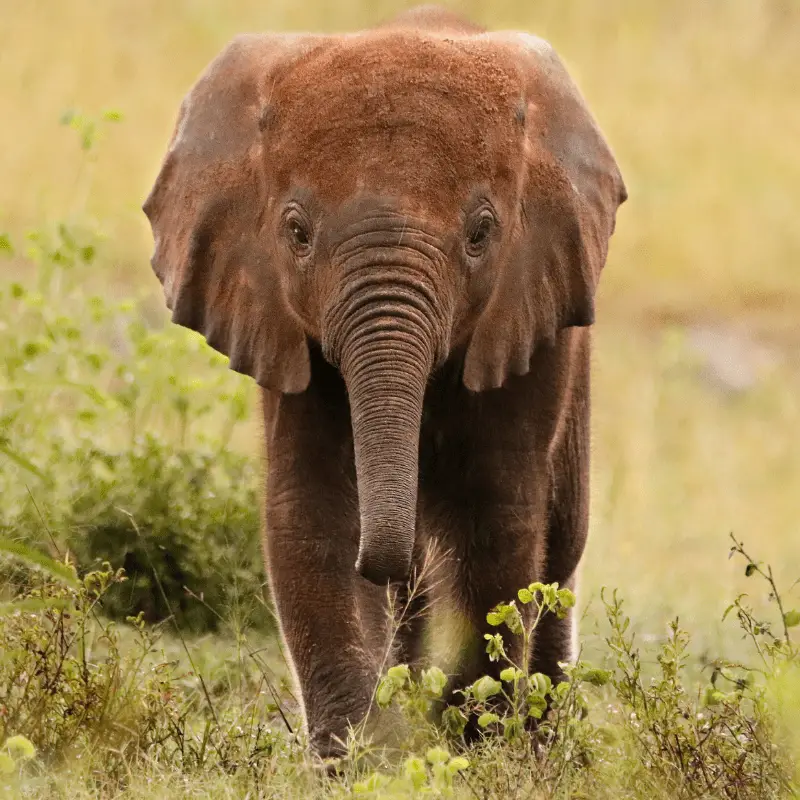
This protection does not only mean that the elephants keep their babies safe from predators and hunters. They also protect the baby elephants from rain, wind, and harsh sun rays. They do this by their large shadows and flicking dirt and mud on the baby elephant.
Recommended Read: Learn about elephant pregnancies
Elephants Have the Longest Gestation Period
Elephants have one of the most prolonged gestation periods among all animals walking on land. The gestation period of a pregnant elephant can last for 22 months.
Not only that, female elephants often suffer from labour pain for days. Once the baby is born, the mothers tend to nurse the baby elephants until they age two years old.
The baby elephants mainly depend on their mother’s milk until about six months of age. After this period, the baby elephant starts to eat vegetation. Still, they cannot survive for more than a couple of weeks without their mother’s milk.
The Trunk of An Elephant Is Sensitive Yet Strong
The elephant’s trunks are the elongated portion of its nose and upper lips. It is a proboscis with up to 40,000 muscles. Compare that to us humans, 600 muscles in our entire bodies.
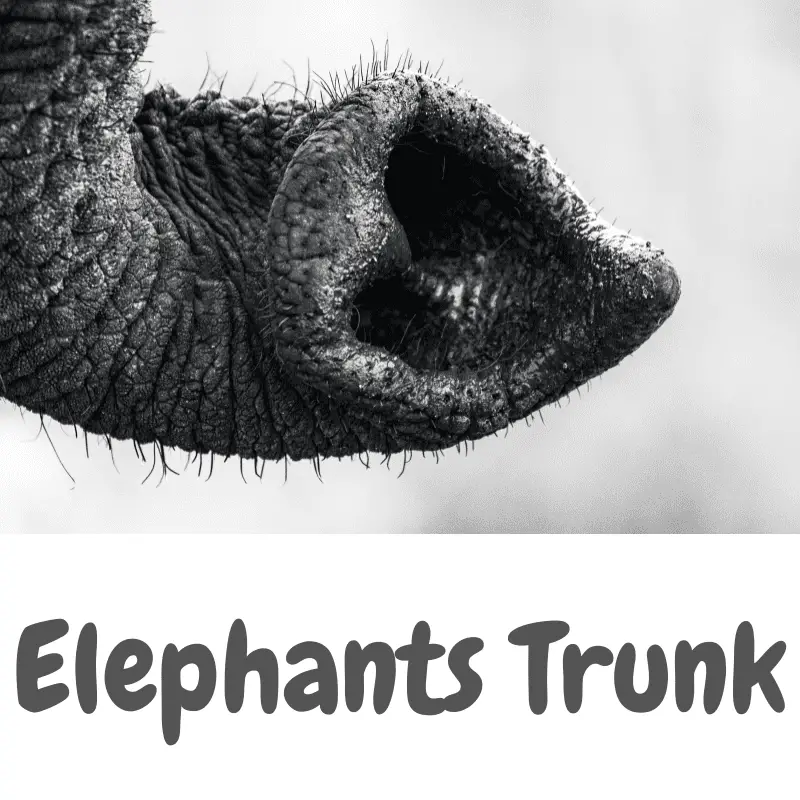
Elephants complete several tasks using their trunks. That includes breathing, touching, smelling, grasping, and sound production. The elephant trunk is so strong that the animals can lift heavy weights of up to 350 kg.
Also, elephants use their trunks to suck up water while drinking. They can suck the water up at 540 km per hour.
Elephants can also use their trunks to perform delicate tasks, like cracking peanut shells without breaking the nut inside.
Communication
Elephants can vocalise and use various kinds of sounds to communicate with other herd members. According to the researchers, these gentle giants can create low-frequency sounds which are not audible to humans. These types of sounds are known as infrasound.
Not only that, but the elephants can also create high-pitched screams that are known as trumpets. This shrill sound can be heard by other elephants from as much as 10 km away.
This ability enables the elephants to keep in touch with each other even though they are far apart. It also helps the elephants to recognise whether another elephant is their friend or enemy.
If the elephants understand that the elephant coming towards them is not their friend, they often gather to protect their young.
The elephants generally create a trumpeting sound to express their distress, excitement, or aggression. They may sound similar, but elephants can easily understand the differences between the sounds.
Touching is yet another method that elephants use to communicate with other elephants. Individual elephants often use their trunk to stroke other elephants while breathing. They also wrap their trunks around another elephant’s trunk to welcome or greet them.
You can often see baby elephants wrap their trunks around their mothers as a sign of love and comfort.
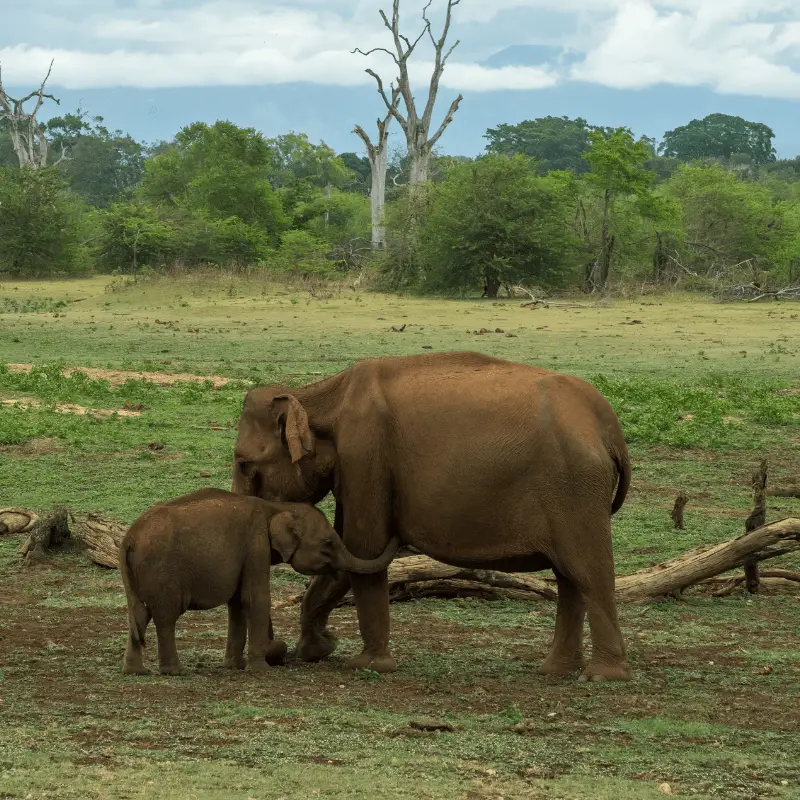
However, this behaviour can also be seen when mild confrontation occurs. The older members of the herd use their trunks to shove and slap the younger elephants to discipline them.
Individual elephants of any sex and age use their trunks to touch the temporal glands, genitals, and mouths of other elephants when they are excited or during mating. This touching enables the individual elephants to pick up chemical cues from the other members.
Not only that, touching is considered one of the most important modes of communication between the mother and the baby elephants. When moving from one place to the next, mother elephants touch their babies with their trunks to maintain the channel of communication. If the calf wants to rest for some time, it leans on the folding of its mother.
The elephants also use visual cues for communication. They often raise their trunks and spread their ears to threaten predators or hunters in confrontational situations.
The elephants can also snap their ears and shake their heads to appear even more aggressive to the predator.
Throwing vegetation and dirt is yet another aggressive behaviour that the elephant showcases. Most of the time, the elephants are bluffing while showcasing this behaviour. However, these cues can help the elephant to understand whether the elephant is genuinely distressed or whether it is simply playing tricks.
Elephants Are Keystone Species
Without the presence of elephants, the entire ecosystem can collapse dramatically. The movements, dietary habits, and other behaviours of the elephants impact and control the ecosystem.
Unknowingly elephants often create habitats for other animals, including zebras, antelopes, and many small insects and animals.
For example, the footprints of the elephants act as a water resource for smaller animals and insects. Not only that, but while eating, elephants pull up bushes and grass making space for new plants to grow.
Through their droppings, elephants also spread plant seeds throughout the area.
We need to look after our elephants, and I give special thanks to sanctuaries and conservation projects for elephants. Their work is remarkable, and protecting these elephants is so essential.

